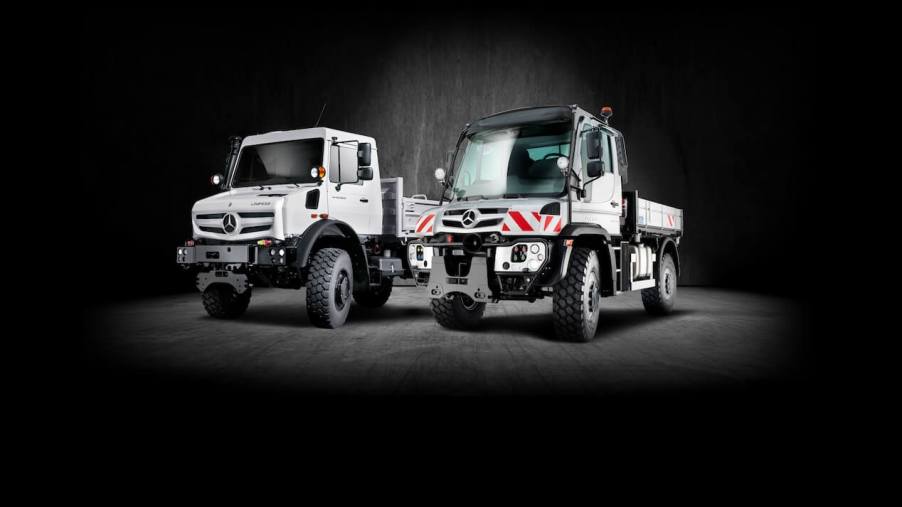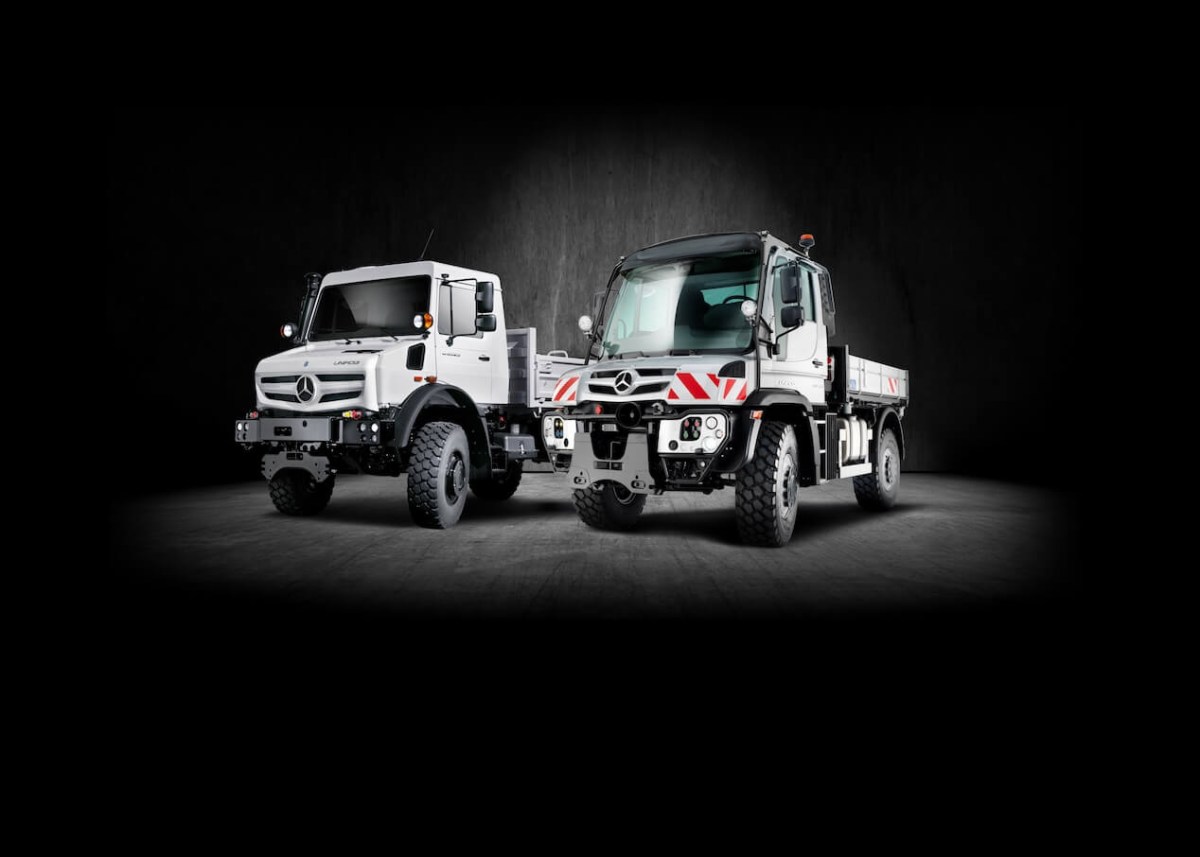
What Does Unimog Stand for in the Mercedes-Benz Unimog?
The Mercedes-Benz Unimog is a massive all-terrain vehicle (ATV) for off-road applications, ranging from desert racing to agricultural work. Its giant tires, forward cabin, and flexible frame combine to create a truck that can handle the most challenging terrain worldwide. But where did the Unimog get its name?
Let’s go over the history of the Mercedes-Benz Unimog, the origins of its name, and where it stands today.
Mercedes-Benz Unimog – history and purpose

As Motor1 describes, the Mercedes-Benz Unimog became an agricultural vehicle in post-WWII Germany. With all-wheel drive, equal-sized wheels, and a power-take-off system (PTO), it could go where a tractor couldn’t and power auxiliary equipment. That made it an indispensable tool.
A central aspect of the Unimog’s design was portal axles. That gave it excellent ground clearance and exceptional off-road ability. And with that came the towering stance unique to the Unimog.
Production began in 1947 by German tool manufacturer Boehringer with the 70200 series Unimog manufactured by hand. In October 1950, Mercedes-Benz took over, eventually converting the Unimog to mass production.
Over the years, the Unimog kept evolving while sticking to its core design. Updated diesel engines, more comfortable cabs, and heavy-duty versions appeared in subsequent decades as the Unimog built its do-anything reputation.
With high-tech, clean-burning diesel engines and an electro-pneumatic transmission, today’s Unimog U 4000/U 5000 has capability like nothing else.
What does Unimog stand for?
In their history of the Unimog, Expeditionmeister notes the origins of its name. Pointing to its all-purpose nature, Unimog is short for “Universal Motor Gerat,” with gerat being German for “device.” And a proper name it is, as this versatile vehicle sees duty in fire departments, militaries, and farming.
And though “Universal Motor Device” is a perfect description, the interesting word “Unimog” also lends itself to the vehicles’ unique nature. With its enormous dimensions and quirky appearance, this German truck’s well-suited to such a singular name.
The Current Generation Mercedes-Benz Unimog: U 4000/U 5000
Today’s Mercedes-Benz Unimog U 4000/U 5000 is a thoroughly modern piece of machinery, now with more technology to complement its legendary design.
While the first Unimog was a spartan vehicle lacking creature comforts, the new U 4000 and U 5000 have modern amenities. Drivers can enjoy comfortable seats, air conditioning, and ample storage space. The rubber-mounted cabin dampens out engine vibrations. And the driver information display (FIS) relays essential data like event messages, status displays, and online diagnosis.
With environmental issues taking center stage, clean-burning engines are a vital feature. And the new Unimog’s up to the task, with available Selective Catalytic Reduction (SCR) technology helping it meet stringent Euro 5 emissions standards. But with up to 600 lb-ft of torque on tap, its diesel engines still have the power to tackle any job.
Since Mercedes-Benz has partnerships with many aftermarket suppliers, there’s a wide variety of attachments for commercial or leisure purposes. Whether for fighting fires or on long-range expeditions, these add-ons create a tailored vehicle for any situation.
But even with modern tech, the Mercedes-Benz Unimog U 4000/U 5000 stay true to their heritage with portal axles, a flexible frame, and giant wheels. Those attributes not only give the Unimog its signature appearance but are what make it such an excellent off-road vehicle. And as the Unimog continues to evolve, it proves itself repeatedly across the globe.
If you’re intrigued and want to know more, classic.com has a useful guide to Unimog pricing and used versions for sale.



